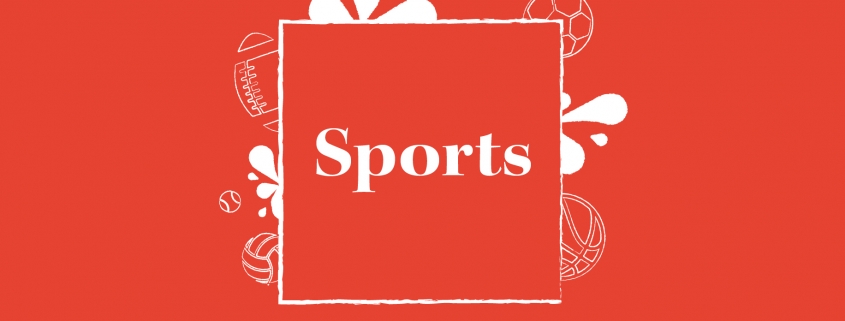The Medic: Fans could be the major risk factor in College Football’s continuation
A couple of weeks ago, I scrolled through Twitter and saw that College Gameday was trending on my feed, and it hit me that college football was finally underway for other conferences. I wanted to see which teams were beginning to play and went onto ESPN only to see major programs such as Oklahoma, Texas and Miami selling tickets.
I was aware that some NFL teams (looking at you, Kansas City Chiefs) include fans at a limited capacity, but it surprised me that colleges are considering the same thing. As I wrote about in my previous column, keeping student-athletes safe is a whole different story from maintaining the same level of security for professionals. NFL teams solely function around the sport of football, while schools have educational and scholarship commitments such as providing students an adequate education through distance learning and supporting staff members who are facing financial hardship during these difficult times. Having to worry about football on top of these existing responsibilities will create more work for universities.
On the same note, student-athletes are college students first, so they have to keep up with classes and do not have a salary contingency for staying safe compared to their professional counterparts. Including a fan base made up of older alumni at student-athlete events increases the risk of exposure even more.
I want to dig a bit deeper and see to what extent universities are implementing safety protocols at games.
One college I looked into was the University of Oklahoma. Ranked No. 3 in the nation for college football, the Sooners wanted their season to occur. I checked out its policies for fans this season and what it came up with for their home games the next couple of months was expected.
The Oklahoma football website says that the program is planning to reduce capacity by 25% to almost 20,000 fans at an 80,000 person stadium in Norman, Oklahoma this season. That number still seems like a lot, but fans should be able to practice proper safety measures, as they are enforcing strict gameday policies such as spacing between seats, mandatory masks, sanitation, cashless payments and, most importantly, no tailgating.
In theory, it may work out. However, as we have seen throughout this pandemic, nothing is a guarantee. Knowing how irrational and self-centered people have been acting during these times, there will be parties and other out-of-game gatherings. It will be critical for universities and anybody allowing fans into stadiums to ensure that any policies they enact will accompany extensive oversight and enforcement to ensure the virus doesn’t spread as a result of their games.
Health experts have highlighted the need for attendee safety as the college football season continues, especially on the topic of seating and distance during the game.
“[Allowing] as few people as possible is one first step to opening up and then, maybe opening up with only a proportion of the seats available for sale … so people can be spaced out,” said Dr. Eleanor Murray, an assistant professor of epidemiology at Boston University’s School of Public Health, to ESPN. “[Going from that to] sort of gradually going back up to a full stadium, I think, would be the ideal from a sort of epidemiological perspective.”
It is also important to account for travel. Most fans don’t live right by the stadium, so they have to drive some distance to get there, and any stops they make along the way will potentially spread the coronavirus even more.
For instance, our favorite rivals from South Bend, Indiana are limiting attendance to 20%. What’s worse about Notre Dame’s situation is that its campus is 1.5 hours away from the Chicago metropolitan area, whose 9.5 million population has been severely impacted by the virus. So any fans traveling through that area have a higher chance of contracting the virus.
In the end, it seems like universities are taking enough health precautions to allow a limited number of fans to enter their stadiums. Although it seems innovative and changes the fan experience even after the pandemic, it is still unclear if this will help keep attendees, staff and ultimately players safe.
Obviously, for Pac-12 California schools and any schools in major cities — including the University of Washington in Seattle — allowing fans is not viable due to the high number of cases in these areas. On the other hand, schools in less populated areas — like Oregon State — can consider bringing a limited number of fans back to games.
What is important, however, is that if Pac-12 football comes back this fall and some schools decide to reopen stadiums for fans, there must be strict precautions outside of the stadium gates. If any of the players from schools in major cities like USC or UCLA catch the virus when they travel to other schools, that will cause more trouble when they return home.
Another possibility is requiring fans to test negative for the virus before entering games, and implementing a policy where fans who have tested positive or exhibit symptoms must be prohibited from entering.
Overall, as the Big 10 and possibly the Pac-12 are looking to restart their seasons this fall and join the rest of these conferences, the important question that universities need to answer is if all these policies are worth the risk of further spreading the virus.
If the schools do not prioritize safety, then allowing back fans will continue the spread of transmission into local communities across the nation and can put all of the collegiate sports seasons on hold for this year if many players and staff also contract the virus.
Pratik Thakur is a sophomore writing about sports and its intersection with health policy during the coronavirus pandemic. His column, “The Medic,” runs every other Tuesday.

